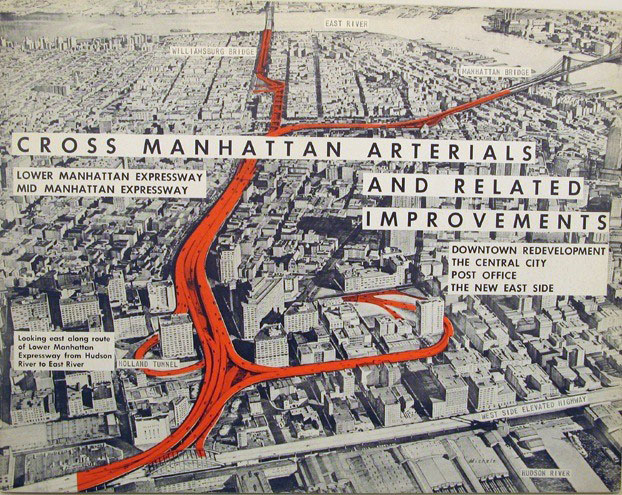An example that is often used in the discussion if design represents values is that of Robert Moses’ low hanging overpasses. Robert Moses, “master builder” of New York from the 1920s to the 1970s and responsible for many of the roads, bridges and parks built in that period, designed the overpasses on parkways in Long Island extraordinarily low. It is said that he did this on purpose, to discourage buses to take these routes. In this way, white upper class car owners were free to use the roads whereas the often poor black people who had to use public transport, were banned from them.
Historically accurate or not, it is a perfect example of how the design of civil constructions, and design in general, can contain values. But if I look around me at the faculty of Civil Engineering and Geosciences, I don’t see a lot of people who care about this sort of stuff. And these are the people that will design oil platforms adapted to the harsh North pole climate, dams capable of disrupting entire ecosystems and roads with an even bigger car capacity than before. Despite the fact that we could clearly use it, there is no course in the bachelor that pays any attention to the ethical objections to this kind of projects. And our faculty is not the only one in Delft where Value Sensitive Design (VSD) is not considered such a big issue.
One of the most important things I learned about VSD, is that it includes many disciplines. Especially if you take the interactionist principle into account, which states that ‘value is created and embedded in the interaction between human and technology, both in how technology is used and designed’. This means a link has to be established between the disciplines of ethics and psychology on the one hand, and technology on the other. And this is hard, given that these worlds are as far apart as Schwarzenegger is from winning an Oscar.
That is why it is so important that this link is already established during our education. This can for example be achieved by working in interdisciplinary teams, attending courses at other universities and paying attention to engineering ethics and responsible innovation. Only in this way, we can make sure that future innovators will think long and hard about the values represented in their designs, the consequences of their decisions and the responsibility of their innovations. That is how we keep civil engineers from following Robert Moses’ footsteps.
Luckily, such a program already exists at our university. You can probably feel it coming: the minor Responsible Innovation is perfectly suited for this purpose! So my call to the Executive Board of TU Delft is: make sure Responsible Innovation is not only taught to the few students who take part in this minor, but make it a regular feature in education programs throughout the university. For now, I can only feel privileged for having been able to take part in this course, that gave me insights that will be useful in the rest of my career.
Image: Yes, that is Robert Moses' proposal for a highway straight through lower Manhattan.
